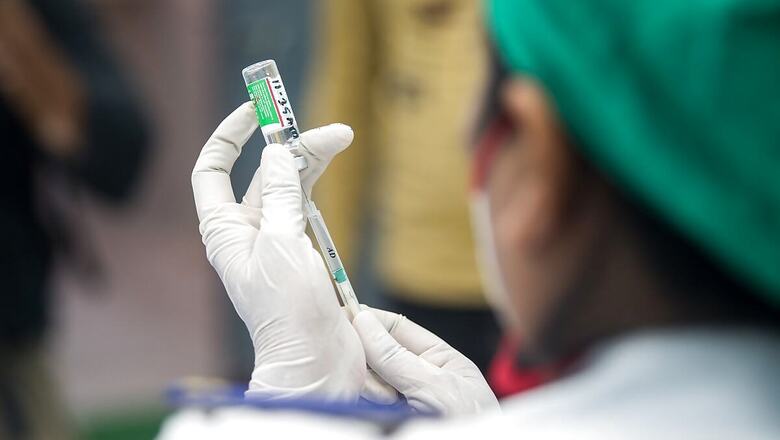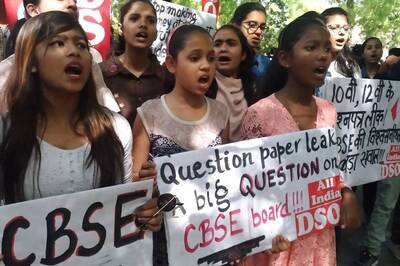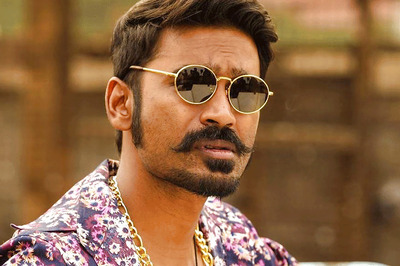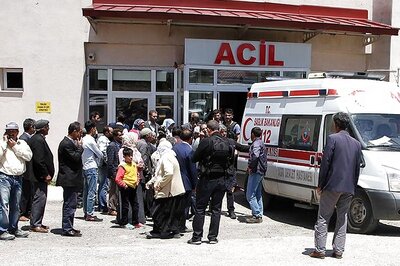
views
As shortage of vaccines continues to affect India’s fight against the COVID-19 battle, the Indian Institute of Science in Bengaluru has started work on clinical development of a more-suitable Indian vaccine that holds promise against the new, more dangerous, variants of the coronavirus.
Scientists at the Molecular Biophysics Unit of the premier IISc in Bengaluru say they have identified molecules that could potentially be very useful in combating the coronavirus pandemic, as it produces a high level of neutralising anti-bodies, much higher than the vaccines that are currently in use.
“It produces very high titers (levels) of neutralising antibodies. So, if what we see in animals holds good in humans — which it has for other vaccines — then we should be producing much higher titers of neutralising antibodies,” said Raghavan Varadarajan, professor of Molecular Biophysics at IISc.
In the trials concluded on animals, including mice and hamsters, the molecules have developed almost eight times the amount of anti-bodies that are developed in recently-recovered patients of COVID-19.
“If there are new variants of the virus, very often the ability of the neutralising antibodies to prevent infection goes down. And even with our vaccine, I’m sure it will go down. But the advantage is, if you have very high amounts to start out with, even if the amounts decrease a bit, they will still be above the threshold required to prevent severe disease,” he said.
This vaccine is also more suited to Indian conditions, purely because it is a ‘warm’ vaccine, that is, it can be stored at room temperature. The vaccines in use currently require elaborate cold storage chains and could see more wastage if there isn’t sufficient facility for that.
Explaining how it is different from what’s available in the market today, the scientist said, “Our vaccine contains what’s called a subunit vaccine. So on the surface of the virus, there’s a protein called the spike protein. And the spike protein binds to a receptor on cells, and that initiates the infection process. The part of the spike protein, which binds to the receptor is called the receptor-binding domain. The spike protein is a big protein, it’s over 1700 amino acids long. And our receptor binding domain is a small part of that. It’s about 200 amino acids long.”
“None of the currently-licensed vaccines, which are in substantial clinical use, have just the receptor binding domain. There are many in development, but none of the currently-used vaccines have this as the antigen. And also, compared to vaccines in India, because it’s a protein, it’s just a subunit vaccine. So, there also it is different from what is currently available in the market,” he said.
Prof Varadarajan’s lab was focusing on developing an influenza vaccine for the last four years, but shifted focus last year to find a vaccine against the pandemic the world is grappling with.
Though they had identified good vaccine candidates way back in September, work on devleopment had been stalled for eight months for lack of funds — at the time, not much thought had gone into the need for another vaccine candidate probably because of a complacency arising out of the assumption that we had overcome the COVID-19 spread. But with the new second wave spelling more doom, funds have come forth and clinical development has re-started. But clinical development alone could take about five-six months, while human trials after that could take another four months.
“Now that we have established the vaccine candidate, we have to do what is called process development that has to be outsourced. And so it has to be produced on a slightly larger scale, and under well-documented conditions and then with that formulation, which is completed process development, we have to do safety and toxicity studies in small animals. Then we have to initiate the clinical trial (on humans) process,” Prof Varadarajan said.
All in all, it could still take a year before this vaccine is available in the market, leading to questions on whether it would still be necessary, the same question that led to the R&D on this being stalled in the first place.
“I think everywhere vaccination will be necessary, because, you know, no country can close all the borders forever, right. And so, once borders open, you know, this disease is not going to be stamped out from the human population. Because it , the virus, has gone into so many other host species already. It has infected cats, it’s infected mink..so there is no way at this point to complete, to eliminate the virus… Polio, smallpox, all these could be eliminated because they don’t have non human hosts. Well, you can be in principle, but the moment you have non-human hosts, then you cannot get it eliminated,” he told News18.
The one certainty currently is that it is impossible to overcome this pandemic without mass inoculation.
Read all the Latest News, Breaking News and Coronavirus News here. Follow us on Facebook, Twitter and Telegram.



















Comments
0 comment